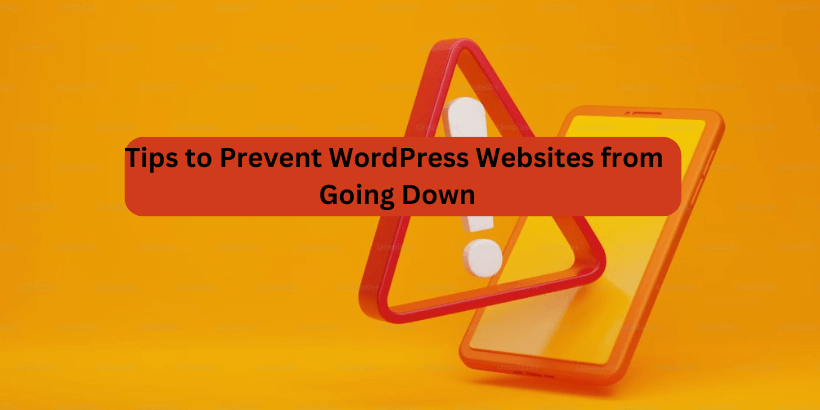Website downtime can be a nightmare for businesses, corporations, and customers alike. It no longer only results in a loss in sales but also damages an internet site’s popularity and visitors’ trust. To make sure your internet site stays operational and reliable, imposing proactive measures to prevent downtime is vital. In this article, we’re going to explore ten effective tips to keep your website from going down and to rank on browsers for clean accessibility.
What is Website Downtime?
Website downtime refers to the period at some stage in which an internet site isn’t handy or unavailable to customers. During downtime, visitors who try to access the website can also stumble upon error messages or find that the website is unresponsive. There are various reasons why an internet site might experience downtime, and it may have huge implications for groups, agencies, organizations, and people relying on their online presence.
Why is it Important to Prevent Website Downtime?
Preventing website downtime is of supreme significance due to its direct effect on sales, reputation, and user experience.
Firstly, downtime equates to a direct lack of sales, impacting corporations that rely on non-stop online transactions. Additionally, it tarnishes a website’s reputation, spoiling users trust and satisfaction. Poor user experience, resulting in frequent downtime, can force site visitors away and hinder consumer retention. Search engine ratings are also influenced, with algorithms dealing with websites that revel in recurrent downtime. Competitively, downtime can offer opponents a bonus, as customers may flip to alternative offerings throughout interruptions. Operationally, downtime disrupts internal methods, affecting employee efficiency and collaboration. In essence, stopping downtime is crucial for monetary balance, user trust, competitive positioning, and standard operational integrity.
Tips to Keep Websites from Going Down

Choose a Reliable Hosting Provider:
The foundation of a stable website lies in deciding on a trustworthy hosting company. Research and opt for a website hosting service that offers robust infrastructure, sufficient bandwidth, and a 24/7 technical guide. This guarantees your website has a solid foundation to face up to traffic spikes and potential server errors.
Regularly Update Software and Plugins:
Outdated software and plugins are common vulnerabilities that could cause website downtime. Ensure your content management device (CMS), server software, and plugins are updated. Regular updates patch security vulnerabilities and enhance standard overall performance, decreasing the risk of unexpected downtime.
Implement Website Monitoring:
Monitoring your website’s performance is vital for early detection of potential troubles. Utilize website tracking equipment to get hold of real-time indicators about server health, reaction instances, and different essential metrics.
Employ a Content Delivery Network (CDN):
A Content Delivery Network facilitates the distribution of your website’s content throughout multiple servers globally, reducing latency and enhancing load instances. This not only improves user experience but also provides a further layer of protection against localized server disasters.
Conduct Regular Backups:
Regularly backing up your internet site is an essential practice for disaster recovery. At the time of a device failure or cyberattack, having the latest backups guarantees you can quickly restore your website to its preceding state. Always go for automated backup solutions to streamline this process.
Optimize Website Performance:
A nicely optimized website is much less susceptible to downtime. Optimize images, enable browser caching, and use compression strategies to reduce page load times. This now not only improves user experience but also reduces the pressure on servers, minimizing the threat of downtime.
Implement DDoS Protection:
Distributed Denial of Service (DDoS) assaults can crush your website with traffic, leading to downtime. Invest in DDoS safety services to mitigate those attacks and ensure uninterrupted access to your website for legitimate users.
Have a Disaster Recovery Plan:
Prepare for the worst-case scenario by developing a complete disaster recuperation plan. Define roles and responsibilities, set up conversation protocols, and feature a step-by-step manual for addressing different types of outages. Being well-prepared minimizes downtime and speeds up recovery.
Utilize Redundancy:
Redundancy includes duplicating important components of your website’s infrastructure to eliminate single factors of failure. Implement redundancy for servers, community connections, and energy components to ensure your website remains operational even if one component fails.
Conduct Regular Security Audits:
Regularly audit your website’s security to identify and deal with potential vulnerabilities. Perform penetration testing, examine consumer permissions, and stay informed about the latest security threats. A secure website is much less likely to experience downtime because of malicious activities.
Conclusion:
Preventing website downtime requires a combination various of proactive measures, strategic making plans, and continuous tracking. By following these ten points mentioned above, you can significantly reduce the danger of downtime and ensure a seamless online experience for your visitors. Prioritize website reliability, and your efforts may be rewarded with increased trust, advanced search engine ranking, and in the end, an incredible online presence.
I hope you enjoyed reading this article!!
Please check out our other recent article:
The post How to Prevent Website Downtime? Tips to Keep Websites from Going Down appeared first on Acme Themes Blog.


0 Commentaires